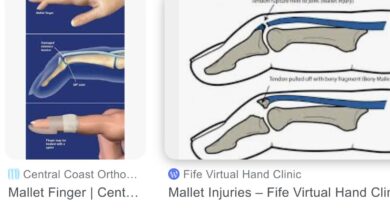ROTATOR CUFF: What is it? How does it work?

Most people have heard of the Rotator Cuff but often mis-pronounce it as the “rotary cuff.” If this complex structure of muscles and tendons doesn’t function properly, your shoulder doesn’t work. Virtually every movement made by the shoulder is controlled by the Rotator Cuff. The shoulder joint is comprised of the head (top end) of the humerus (upper arm bone) and the glenoid fossa (a cup-like socket in the shoulder blade) which are held together by the Rotator Cuff. The four muscles and tendons of the Rotator Cuff surround the head of the humerus on all sides and initiate and control shoulder movements.
The shoulder has six directional movements, four of which are caused by the Rotator Cuff. Those four movements are:
ABduction-elevation of the elbow from the waist upward
ADduction-movement of the elbow downward from an elevated position
External rotation- movement of the hand from front, laterally to the side
Internal rotation-movement of the hand inward from a outward rotated position
The other two movements are extension and flexion.
The four muscles whose tendons attach to the head of the humerus and form the Rotator Cuff are the following:
Supraspinatus
Infraspinatus
Teres Minor
Subscapularis
Each of these muscle-tendon combinations is responsible for a specific function of the shoulder joint determined by where the tendon attaches to the humeral head.
They are as follow:
Supraspinatus-attaches to the upper, outer humeral head causing ABduction
Infraspinatus-attaches to the middle part of humeral head causing external rotation
Teres Minor-attaches to lower part of numeral head causing external rotation
Subscapularis-attaches to the neck of the humerus causing internal rotation & ADduction
Without the Rotator Cuff to stabilize it, the shoulder joint would dislocate-the head of the humerus would not stay within the socket of the glenoid fossa.
Problems with the Rotator Cuff most often “occur in people who repeatedly perform jobs requiring overhead motion” of the shoulder. Painters, carpenters, mechanics, and baseball and tennis players are high-risk individuals for chronic, overuse injuries. Acute injuries also occur as a result of sudden trauma and falls.
Four specific types of injuries occur to the Rotator Cuff. They are as follow:
Tear: partial or full-thickness tears of one, two, three, or all of the tendons
Tendinitis: overuse-induced inflammation of the tendon(s), can heal by calcifying
Tendinopathy: other abnormalities of the tendon
Impingement: painful loss of free movement of the tendons due to inflammatory swelling
Diagnosing these above-listed problems is accomplished by thorough physical examination and x-ray, but ultimately the most accurate and informative test is magnetic resonance imaging (MRI) of the shoulder. The resolution (clearness of images) of MRI exams is so precise that it can determine full-thickness from partial tears as well as which specific tendon(s) is/are affected. Surgery to repair a Rotator Cuff tear is never done without first doing an MRI.
The symptoms of Rotator Cuff injuries are pain occurring at rest, and more specifically, pain with the various movements of the shoulder. Really astute examiners claim they can determine which of the tendons is involved just by their examination, but no surgeon is eager to operate on someone without first seeing the extent of damage using MRI images.
Treatment ranges from conservative (rest, ice, anti-inflammatories, physical therapy) to moderately aggressive (cortisone injections in the shoulder) to aggressive (surgery).
Conservative treatment includes non-invasive measures directed at pain control or relief, only. Resting the shoulder, regular icing, and non-steroidal anti-inflammatory drug’s (NSAID’s) are recommended for every patient regardless of the severity of the injury. Physical therapy is helpful for patients whose Rotator Cuff is not torn, and it may actually be curative.
Moderately aggressive treatment in the form of steroid injections into the area of Rotator Cuff tendon attachments, again, is only for relief of inflammation and pain. But even for patients with Rotator Cuff tears, it won’t help to repair the tear, but it may temporarily give some pain relief.
Aggressive treatment involves surgical repair. There are numerous techniques used including arthroscopic tendon repair, open tendon repair (a regular long incision), tendon transfer (using a nearby tendon moved to repair the tear), and total shoulder joint replacement. The decision for which procedure the surgeon chooses is determined by the patient’s physical exam and the findings on MRI imaging of the shoulder. As I previously mentioned, a surgeon will not touch a shoulder without first doing an MRI.
Surgery is indicated if symptoms have lasted 6-12 months, if there is a large tear which has little chance of healing on its own, if there is significant weakness or loss of function of the shoulder, or if the injury has been fairly recent. The Supraspinatus tendon is the most frequently torn of the four tendons. Tears may be partial or full thickness, and the ends of the tear often fray making surgical repair nearly impossible. It’s like trying to sew the ends of two tassels together. It’s very difficult. When a tendon sustains a full thickness tear, the muscle to which the tendon attaches retracts causing the tendon to retract (pull back) also, making it very difficult to find, let alone repair, during surgery. Also, if the tear has been long-standing, scar tissue and adhesions are likely to have developed which make finding the tendon difficult and repair nearly impossible.
Results of surgery aren’t always as good as one would hope. Obviously younger patients with acute injuries are going to have better results than older patients with chronic tears. Post operative physical therapy is a must for regaining range of motion and returning function to as close to normal as possible. Regardless of the surgeon, the procedure done, and the post op rehab program, the shoulder will never be the same again. Indianapolis Colts quarterback, Andrew Luck, had a less-involved shoulder operation, and has taken almost two years to recover. And it’s still not certain how good his strength, range of motion, and function will be. The shoulder is a complex joint, and there are so many variables to consider when injuries occur and so many possible outcomes.
Dr. G’s Opinion: Shoulder Surgery, especially Rotator Cuff repair, is a tough nut to crack. Post operative pain is considerable, rehab is slow and prolonged, and results are variable. Just like “Hollywood-portrayed” plastic surgery can’t change your appearance, Rotator Cuff repair won’t make you throw a football like Peyton Manning. Expectations are often lofty and disappointment and discomfort are common results. A structure as complex as the Rotator Cuff is bound to have consequences when it is injured. Pick your surgeon based on his/her experience and recommendations from satisfied patients. But since everyone is unique, you should not expect perfection.
References: mayoclinic.org/RotatorCuff
Orthoinfo.aaos.org/rotator cuff
eMedicineHealth.com/rotatotcuff
Healthline.com/rotator cuff





Thank you
Your blog post was the highlight of my day. Thank you for brightening my inbox with your thoughtful insights.
Thank you
<a href="[Link deleted]think that you could do with some pics to drive the message home a little bit,
You’re right.
Your blog post was exactly what I needed to read right now. It’s amazing how you always seem to know just what to say.
Thank you.
I want to express my appreciation for the writer of this blog post. It’s clear they put a lot of effort and thought into their work, and it shows. From the informative content to the engaging writing style, I thoroughly enjoyed reading it.
Thank you very much!
Your writing has a way of making complex topics seem approachable. Thank you for demystifying this subject for me.
Thanks.
Your blog post was the highlight of my day. Thank you for brightening my inbox with your thoughtful insights.
Thank you.
This blog post is packed with great content!
Thank you.
<a href="[Link deleted]quotesyour authored material stylish. nonetheless,
Thanks
Wow, this blogger is seriously impressive!
Thank you.
This blog post has left us feeling grateful and inspired
Thank you
Keep up the fantastic work!
Thanks
Leave a comment and let us know what your favorite blog post has been so far!
Ok
Looking forward to your next post. Keep up the good work!
Ok
<a href="[Link deleted]agentI think that you could do with some pics to drive the message home a little bit,
Ok
From start to finish, your content is simply amazing. You have a talent for making complex topics easy to understand and I always come away with valuable insights.
Thanks
I just wanted to take a moment to say how much I appreciate your blog posts. They’re always well-written, informative, and keep me coming back for more. Keep up the great work!
Thank you, James.
Your blog is always a highlight of my day
That’s a very gracious compliment. Thank you.